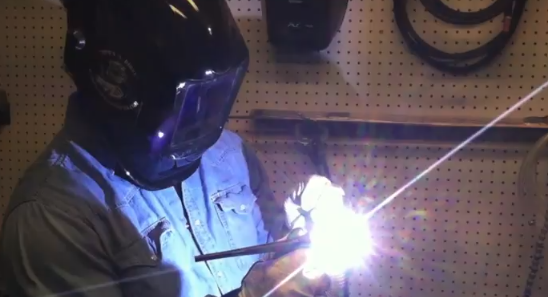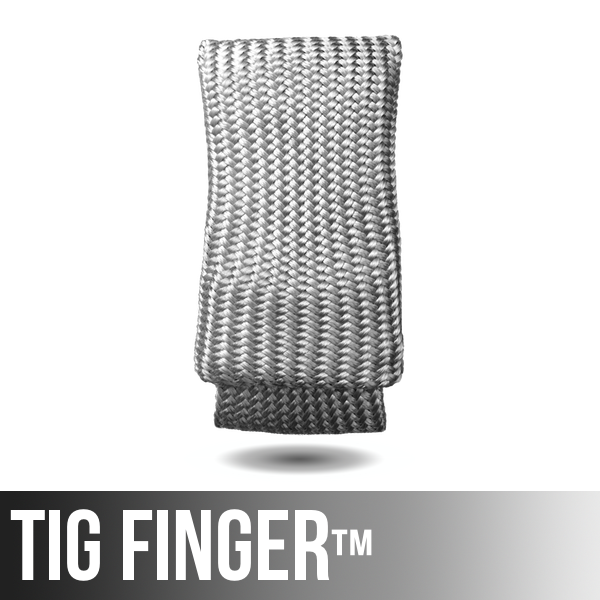5.) Horizontal TIG Beads with Filler Rod
[viddler id=a691ed4c w=684 h=450]
| Materials Needed | Filler material 1/16″ (1.6mm) or 3/32″ (2.4mm) ER70S-2 |
| Metal Preparation | Grind or sand to clean bright metal |
| Machine Settings | DCEN, Amperage Range 120-150, Torch Gas 15 cfh Cup Size #7 |
| Notes | Try to add rod every 1 second. Move the torch ahead about 1/8″ (3mm) per second. Keep arc length around 1/8″ (3mm) or less. Torch angle at 20 degrees or less. Point electrode upward about 5-10 degrees. |
Before welding 2 pieces of anything together, it makes sense to weld some tig beads in different positions. Not for days on end, but at least fill a few pieces of metal with beads to get accustomed to welding in different positions.
getting comfortable is part of being a good welder. Use your head. figure out different ways to hold the torch that feel good to you.
When you weld in different positions things feel a bit different …but that is ok and normal.
Practicing running tig beads in all kinds of positions will make you a better welder.
You will see in this video that I am using a TIG finger. It really helps in finding a way to be steady. With a Tig finger, I can prop my hand near the bead I am welding even when there is nothing else to prop on.
I encourage you to try one.
You might also try clamping a pair of vise grips on the piece of metal to prop on if you dont have a Tig finger. Again, think about how to get comfortable and use your imagination. There is always a way.
Welding tig beads in horizontal position is no more difficult than welding in flat position…in fact, I think its actually easier because its easier to see the puddle.
You don’t even have to tilt your head…
Line of sight is good . You can see in the video, I am comfortable and have a good view of the puddle without contorting my neck.
Even though tig welding is not affected nearly as much by gravity as mig or stick welding…because of the small puddle, it still helps to point the electrode upward a bit to take advantage of the arc force. this will help to avoid underfill or undercut at the top of the bead.
Other than pointing the electrode upward, the same exact techniques that work in flat position will work for horizontal.







Leave a Reply